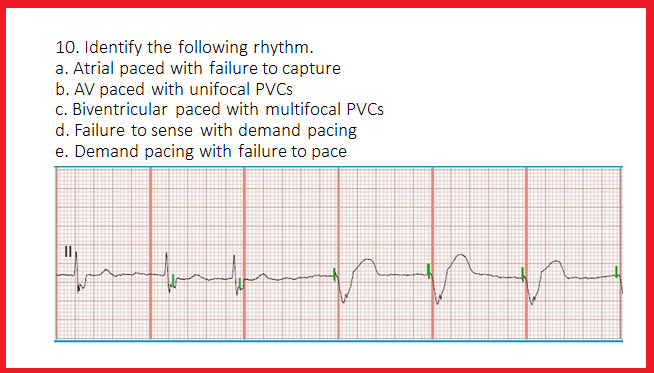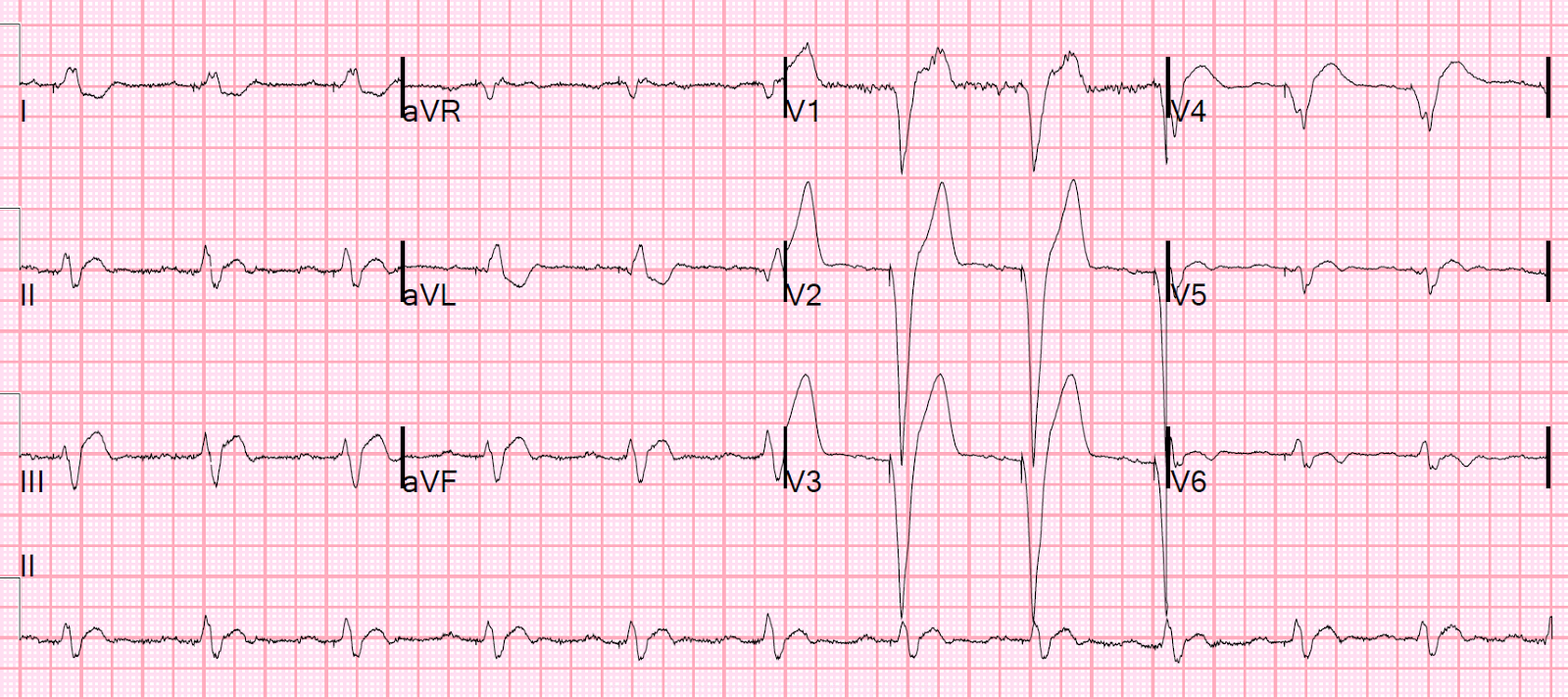

Single-site left ventricular pacing (LVP) confers similar improvements in clinical parameters to BIVP, even in the long term. Most of the available clinical data have been derived from studies involving permanent biventricular pacing (BIVP).

In addition, reductions in mortality and hospitalization have recently been demonstrated. These studies have shown statistically significant improvements in quality of life, NYHA functional class ranking, exercise tolerance and left ventricular reverse remodelling.
#VENTRICULAR PACED RHYTHM WITH FAILURE TO CAPTURE SERIES#
Many observational studies, as well as a series of randomized, controlled trials have demonstrated the safety, efficacy and long-term beneficial effects of CRT. CRT is an adjunctive treatment currently indicated for patients remaining symptomatic in NYHA class III or IV despite optimal medical therapy. Patients with heart failure (HF), low ejection fraction (EF) and left bundle branch block (LBBB) can be treated with cardiac resynchronization therapy (CRT). Using ECG criteria based on the FB may constitute an attractive option for a safe, simple and rapid optimization of resynchronization therapy in patients with HF, SR and LBBB. The indications provided by the tested parameters were mostly concordant in that part of the FB corresponding to the shortest AV intervals. The tissue Doppler asynchrony index (Ts-SD-12-ejection) showed a non significant decreasing trend in the FB. Interventricular delay and mitral regurgitation progressively and significantly decreased as AV delay shortened in the FB. Diastolic filling time, ejection fraction and myocardial performance index showed a statistically significant improvement in the FB. Velocity time integral and ejection time did not improve significantly.

Echo-derived parameters were collected in the FB and compared with the basal LBBB condition. We defined the "fusion band" (FB) as the range of AV intervals within which surface ECG showed an intermediate morphology between the native LBBB and the fully paced right bundle branch block patterns. Use of QRS morphology to optimize device programming in patients with heart failure (HF), sinus rhythm (SR), left bundle branch block (LBBB), treated with single-site left ventricular pacing. The results are reevaluated regularly.Electrical fusion between left ventricular pacing and spontaneous right ventricular activation is considered the key to resynchronisation in sinus rhythm patients treated with single-site left ventricular pacing. Nicklaus Children’s Hospital’s cardiac care team devotes their time and efforts to ensuring that patients who need pacemakers receive the proper heart pacing to take care of their needs. Ventricular pacing at Nicklaus Children’s Hospital This can include everything from chest pain to fatigue, heart palpitations, cough, difficulty breathing and a number of other problems. Recent research has shown that ventricular pacing alone may cause a variety of symptoms known collectively as pacemaker syndrome. Is any special preparation needed?ĭoctors will perform a number of tests to determine the type of pacemaker and ventricular pacing that is right for you. In other cases, the pacemaker may need to be set to regulate ventricular pacing more regularly.

This device will deliver current to the ventricles if the heart rate falls below a predetermined level. In most cases, ventricular pacing is known as episodic pacing and is provided by what’s known as a ventricular demand pacemaker. It’s intended to regulate the heart rate in individuals with abnormally slow heart rhythm. Ventricular pacing refers to the electrical stimulation provided to the ventricles of the heart by a pacemaker.


 0 kommentar(er)
0 kommentar(er)
